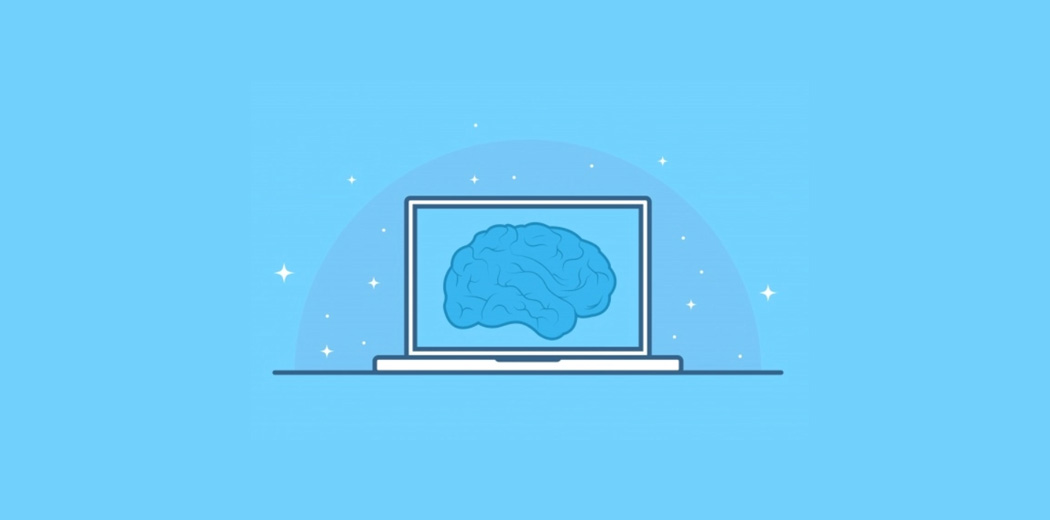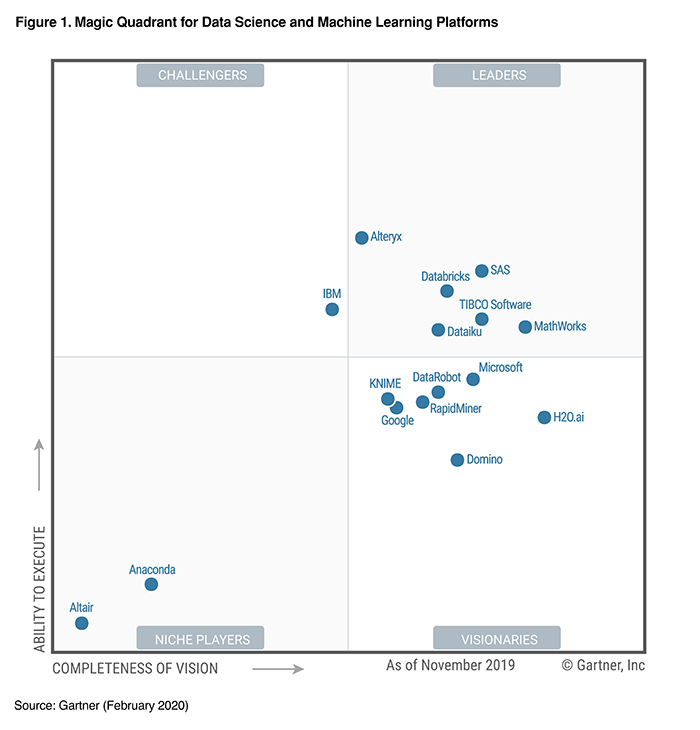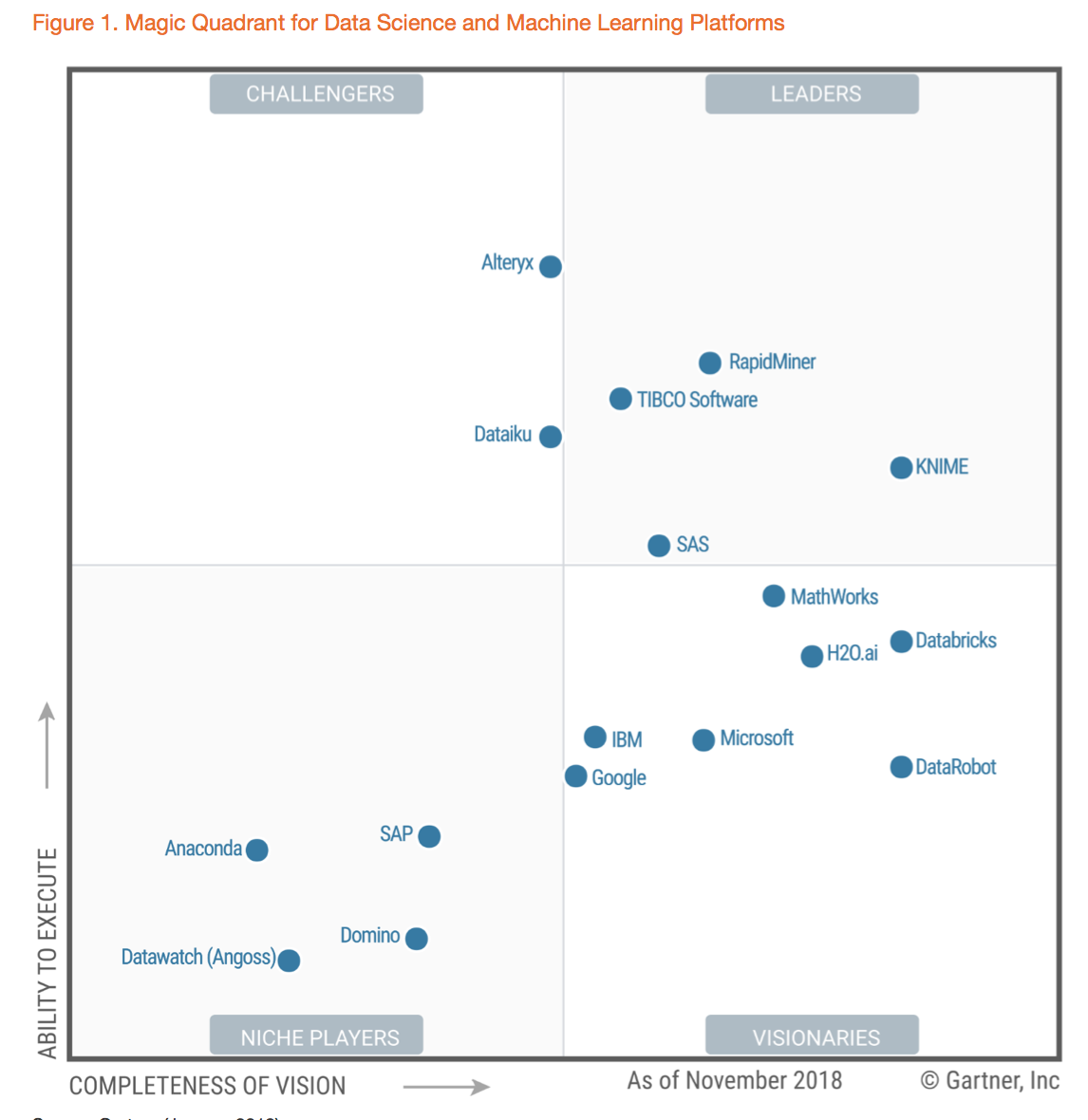Which Data Science or Machine Learning Tool is the Best?
We are living in the age of choices. The data revolution has transformed the way businesses run and customers behave. And we are most definitely spoilt for choice when it comes to data science and machine learning tools.
Where only SAS existed as the go-to tool for analytics once (it’s still right up there as Gartner’s Magic Quadrant will show), we now have so many other tools to works with now. One of the most thrilling releases in recent years is the automated machine learning slew of tools, such as Google Cloud Platform, Microsoft Azure ML, etc.
These machine learning tools offer off-the-shelf solutions that a lot of data science projects can plug and play (assuming they have the right infrastructure in place, of course).
Which leads me to the million-dollar question – which data science or machine learning tool should you choose? Well, who else can best answer that question than Gartner?
Gartner releases it’s annual Magic Quadrant for ‘Data Science and Machine Learning Tools’ every February. Top tech behemoths and organizations across domains and industries look to this Magic Quadrant to understand which machine learning tool they should integrate into their processes.
“Gartner defines a DSML platform as a core product and supporting portfolio of coherently integrated products, components, libraries and frameworks (including proprietary, partner and open source). Its primary users are data science professionals. These include expert data scientists, citizen data scientists, data engineers and machine learning (ML) engineers/specialists.”
Note: Looking for Gartner’s Magic Quadrant 2020 for Analytics and BI Tools? We have you covered!
So, here is Gartner’s Magic Quadrant 2020 for Data Science and Machine Learning Platforms:
And this is how the Magic Quadrant for Data Science and Machine Learning tools panned out in 2019:
You can view the full report on all the tools on Gartner’s official site. It’s an exhaustive report that details the strengths and weaknesses of every platform mentioned above.
Analytics Vidhya’s Take on Gartner’s Magic Quadrant 2020 for Data Science and Machine Learning Tools
- We’ve seen a heavy movement towards the ‘Visionaries’ and ‘Leaders’ segments this year
- SAS not only remains in the ‘Leaders’ section, but has improved its score on both the axes. This is very interesting – for all the discussions that SAS is dead or not innovating enough we hear in the community.
- RapidMiner moved from ‘Leaders’ quadrant to ‘Visionaries’ – now positioned close to DataRobot and KNIME
- Alteryx and Dataiku have moved from ‘Challengers’ to ‘Leaders’ – a huge leap for both companies
- IBM, in a bit of a surprise move, has gone from a ‘Visionary’ to a ‘Challenger’
- For all the Python fans, Anaconda remains in the ‘Niche Players’ segment
- Altair is a newcomer this year and has settled into the ‘Niche Players’ section. I’ll be keeping an eye on this for next year’s Magic Quadrant. I wouldn’t be surprised to see a leap for Altair
- Google, Microsoft, H20.ai and DataRobot retain their position in the ‘Visionaries’ segment of the Magic Quadrant
- MathWorks and Databricks have made the leap from ‘Visionaries’ to ‘Leaders’
- SAP is not included in any of the quadrants!
Have your say on the Magic Quadrant!
What jumped out at you in this year’s Magic Quadrant? I am certainly keeping an eye on Altair and H20.ai this year. I fully expect them to make a significant leap in the coming months.
If you’re new to the world of machine learning, I highly recommend checking out the popular Applied Machine Learning course!







